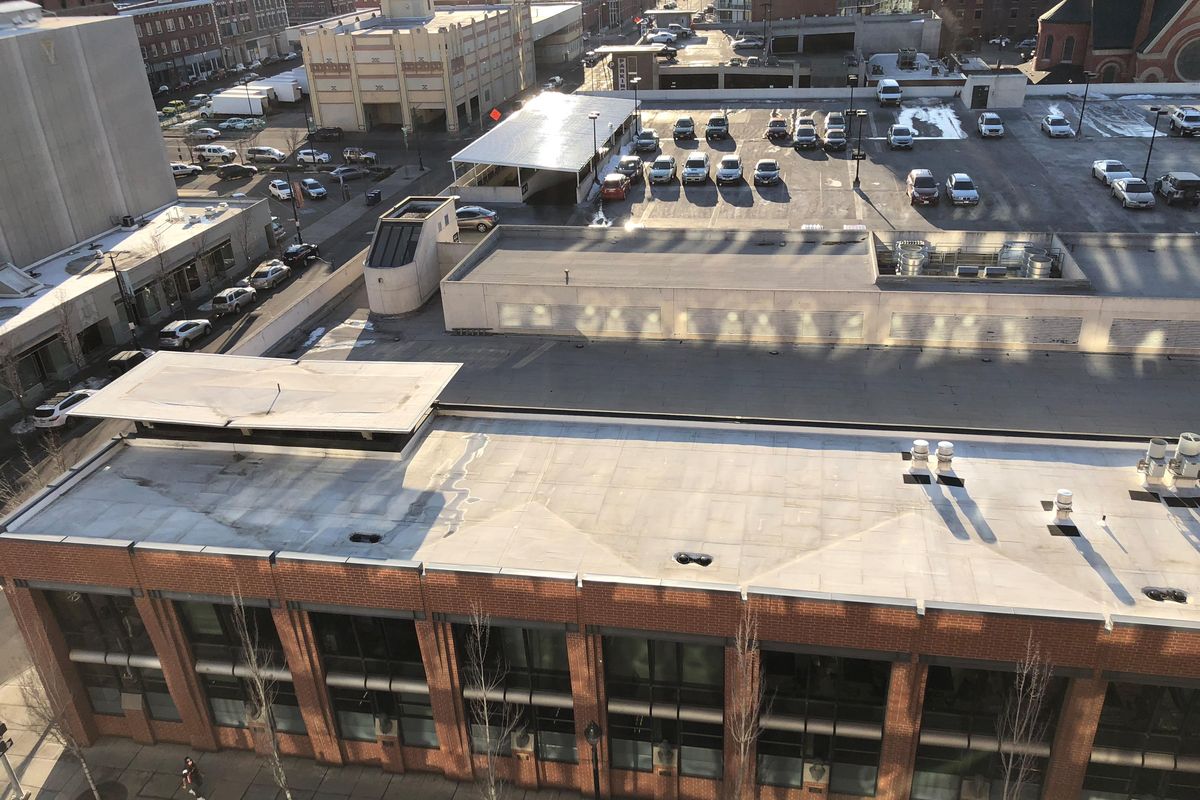Then and Now: Single-room occupancy hotels rose to fill Spokane’s growth needs
2019 – The Spokesman-Review production facility, which has housed the newspaper’s printing plant since 1981, takes up most of a city block at Monroe Street and Sprague Avenue, shown Friday, March 22, 2019. The block once had a mix of uses, including a furniture store, several residence hotels, a gas station various parking lots. (Jesse Tinsley / The Spokesman-Review)
In the aftermath of the Great Fire of 1889 and the 1893 financial panic came Spokane’s boom years. In less than 20 years, approximately 500 buildings sprang up in the downtown area. Today’s suburban sprawl had not yet developed.
As many as 150 of the new buildings were residence hotels, featuring hotel rooms with minimal amenities, and retail spaces on the ground floor. Rooms usually only had a bed, a sink, a wardrobe and little else. Toilets and showers were usually down the hall. Every room had a single small window.
These buildings fulfilled the need when hundreds of workers, mostly men, poured off the train every day in Spokane. Historian Orville Pratt said so many men thronged to the area that the hotels and lodging houses could not care for them. “Many slept on chairs or floors in hotels and saloons,” he said. The boom was driven by mining, timber, farming, banking and general urban growth.
Spokane’s population grew from approximately 350 in 1880 to 19,922 in 1890. Twenty years later in 1910, the city had 104,402 people. The 1920 census was 104,437, virtually unchanged.
In the photo above, three remnants of the era of SRO hotels – the Albany, Regal and Stanford – still stand in 1964. By then, suburban growth had drained the downtown of families, and hotel residents were mostly the elderly or disabled.
Fire destroyed Cohn Bros. Furniture in 1960 at the corner of Monroe Street and Sprague Avenue and the adjacent garage, expanding Evergreen Parking’s business there. Around 1968, the three old buildings, all empty or just used for storage, were demolished and the space was used for more surface parking.
In 1979, after many years of use as a parking lot, Cowles Publishing Co., the publishers of the Spokesman-Review and Spokane Chronicle newspapers, broke ground on their new printing plant, designed by architect Bruce Walker and his team at Walker, McGough, Foltz & Lyerla. The new plant, with street-level windows where passersby could watch the press in operation, opened in 1981 after installation of a new printing press.
The newspaper production facility was remodeled and significantly expanded in the late 1990s.

